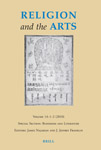
- Author: Mikako Tomotari1
- Source: Religion and the Arts, Volume 21, Issue 4, pages 459 – 489 Publication Year : 2017
- DOI: 10.1163/15685292-02104001
- ISSN: 1079-9265 E-ISSN: 1568-5292
- Document Type: Research Article
ーーーーーーー
brill.com/rart
A Study of the Buddhist Stone Reliefsof Mt. Hiko and the Influence of Shugendo in the Kyushu Region
Mikako Tomotari
Kyushu University
Shugendo, which prospered during Japan’s Middle Ages, valued ascetic practices and fused mountain worship with Taoism, Shinto, Buddhism, Animism, astronomy, and medicine. However, since it was transmitted via oral tradition from one generation to the next, limited evidence can be found. Therefore, this essay analyzes 3d imaging data of stone reliefs found at Mt. Hiko, located in the Kyushu region of Japan, to discern whether the carvings depict certain deities and how the Sanskrit characters found in the moon circles represent Shugendo thinking. In addition, it examines how the influence of Shugendo art spread throughout the Kyushu region, Kiyomizu (Kagoshima Prefecture), and Aoki (Kumamoto Prefecture) as well as reassesses its cultural significance. With regard to the former, the results show that a relief of a seate Amitabha was engraved between two other deities: the Mahaasthaamapraapta and Avalokite?vara. Concerning the latter, the findings reveal that these were the locations of Amitabha worship by the esoteric Tendai sect, which revered “the water” (rivers) and represented an association among Mt. Hiko, Kumano, and Aoki
Keywords
Shugendo – 3d – sculpture – Mt. Hiko – Japan